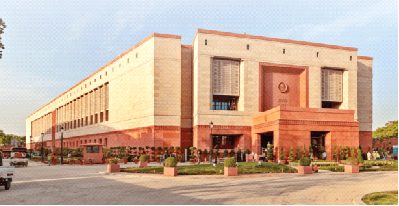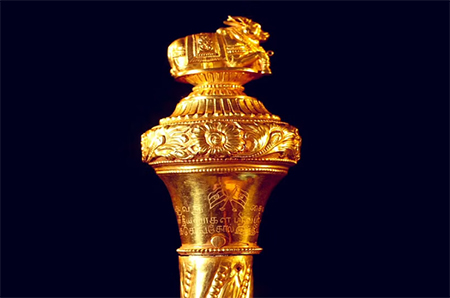On May 28, Prime Minister Narendra Modi dedicated the new Parliament building to the people of this country. The auspicious day is marked with the installation of historic Sengol inside the Parliament.
Delivering his first speech in the new building, Prime Minister Narendra Modi said, “This is not just a building. It is a reflection of the aspirations and dreams of 140 crore Indians. This is the temple of our democracy. This is a message to the world about India’s determination…This new Parliament building connects planning to reality, policy to realisation, willpower to execution, and sankalp to siddhi.”

“There is a new energy, new zeal, new enthusiasm, new thinking and a new journey. There are new visions, new directions, new resolutions and a new trust…When India moves forward, the world moves forward. This new building of the Parliament will call for the development of the world along with the development of India,” Prime Minister added.
Sengol–A Symbol of transfer of power
During this event, Prime Minister Narendra Modi placed the historic ‘Sengol’ near the Lok Sabha Speaker’s chair in the newly built Parliament building. The ‘Sengol’ holds great significance as a symbol of power and authority, reminiscent of its use in ancient South Indian kingdoms.
- Sengol was installed in the new Parliament building by PM Narendra Modi on May 28
- Sengol is a historical sceptre from Tamil Nadu, given by the British to the first Prime Minister Jawaharlal Nehru
- Sengol represents the transfer of power
- Sengol was kept in a museum in Prayagraj (earlier Allahabad)
- On June 3, 1947, the last Viceroy of India, Lord Mountbatten shared the Partition plan
- To mark the succession of power, Mountbatten asked Nehru about his plans. Nehru soon turned to C. Rajagopalachari (Rajaji) for help
- Rajaji was the epitome of knowledge and after days of research, he shared the ancient Tamil tradition of transfer of power
- In the Chola period, the kings transferred powers to their successors by transferring ‘Sengol’
- Back then Rajaguru (court high priest) handed over the Sengol symbolising power and justice, from the old king to the new king
- The new king used to hold the Sengol and in the name of Bhagwan Shiva, they would take oath to serve and offer justice to their people
- Rajaji informed Nehru of this tradition and suggested that a Sengol (sceptre) be crafted so that the British could present the new Prime Minister with it through a Hindu priest
- Rajaji who was a follower of Thiruvavduthurai Adheenam, one of the oldest Hindu Math founded in the 16 century
- The place is located 82 kms away from Thanjavur, the then capital of the Cholas
- Rajaji immediately reached out to the 20th pontiff of the Mutt, Gurumahasannidanam Srilasri Ambalavana Desikar Swamigal.



















Comments